Properly cleaning the dirt and stains off glassware and plates is beneficial for your health and cooking experience. However, dishes that are not don’t carefully cleaned encourage bacteria buildup and can cause food contamination.
Despite the number of years you may have spent washing dishes for yourself, friends, or family, there must have been times when you didn’t leave those dishes 100% clean. Luckily, there are several ways to better clean kitchenware.
This article saves you from dirt-induced frustration by covering the best tips and methods for cleaning your glasses, plates, and cutlery. Let’s dive in and know different ways to clean glasses and plates.
- How to Do A Basic Clean?
- How to Get Rid of Cloudy Stains?
- How to Clean Colored or Dark Stains?
- Manual Hand Washing vs. Dishwasher
- Dos and Don’ts of Cleaning Glasses and Plates with a Dishwasher
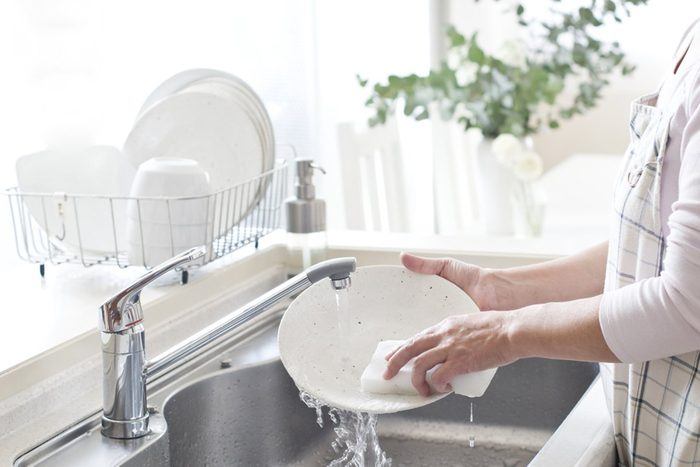
How to Do A Basic Clean?
A dishwasher and handwashing with soap and a sponge are the two ways to wash dishes. Generally, dishwashers are better at cleaning dishes than the manual method. Although, you might find that a dishwasher is not as efficient with cleaning glassware.
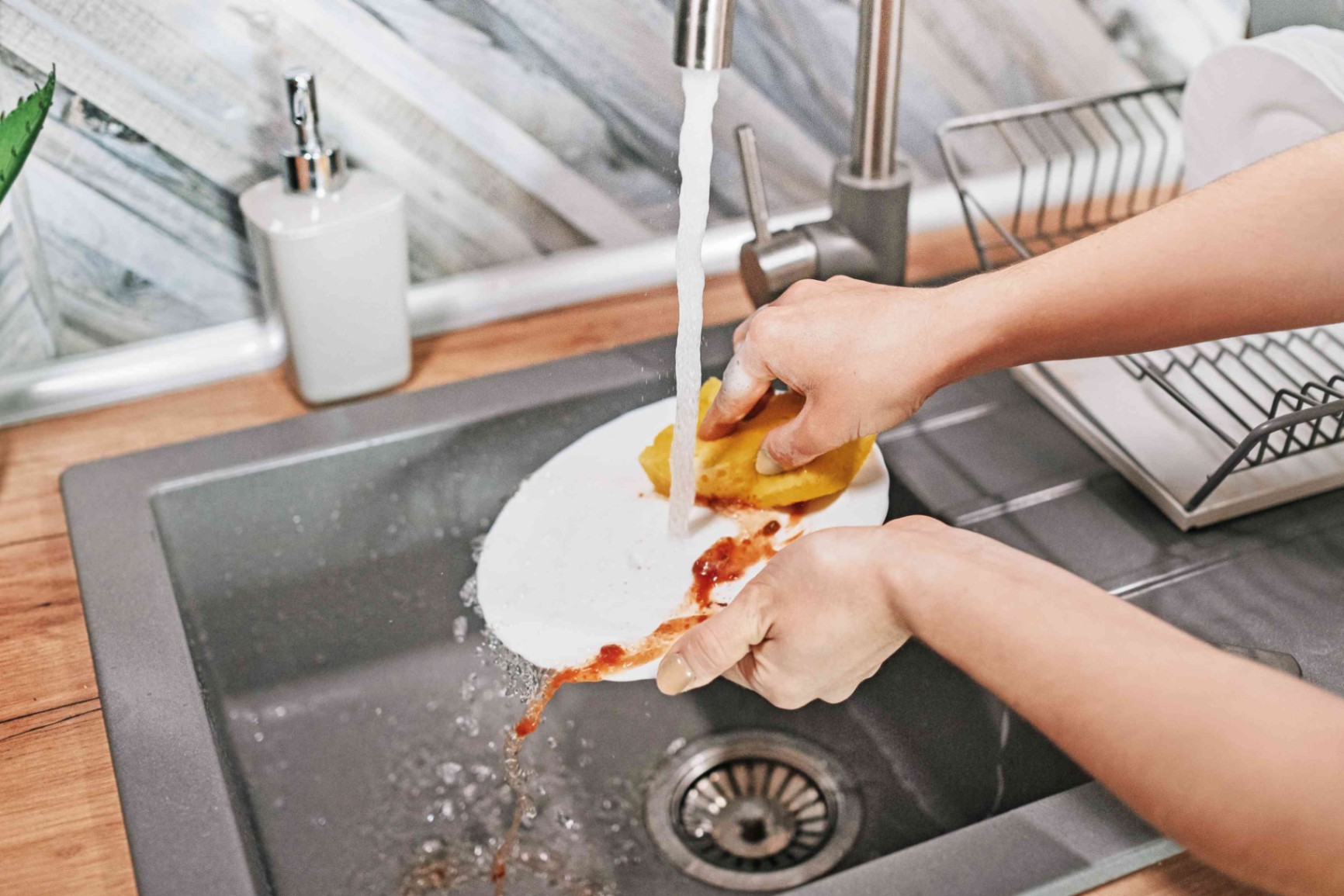
When washing delicate glassware like wine glasses, use a gentle cycle if you still prefer using a dishwasher. Position the glassware with enough room between them to prevent them from rattling against each other
If you don’t own a dishwasher, you can fill up your sink or a bowl halfway with warm water and add a few drops of dishwashing liquid. Using too much liquid can cause streaks after drying. After that, you can use a clean, soft sponge to gently wipe off the dirt from the cups and plates.
Rinse thoroughly and allow the dishes to air-dry over a drying rack or place them upside down on a dry towel. Try not to wipe down with a towel or cloth as it might leave some residue and unwanted marks.
Removing Burnt Stains on Your Pots
Whether it’s under or inside the pot, burnt stains and marks are largely unavoidable, especially when you’re using aluminum pots instead of non-stick pots. However, cooking with burnt stains could cause food contamination, so it’s best not to ignore them.
For burnt food stuck at the bottom of your pot, pour some water into the pot. Add one spoon of salt and two spoons of detergent powder, squeeze in some lemon juice and bring to boil for five minutes.
Drain the water and scrub the pot with a baking soda and detergent mix when the stains start to peel off. Then, wash and rinse with warm water as usual.
How to Get Rid of Cloudy Stains?
Owners of glassware always prefer their glasses to remain transparent, beautiful, and shiny. No matter how much you try, cloudy residue sometimes interferes with this goal. Film buildup from hard water minerals and excess detergent is the cause of cloudy residue.
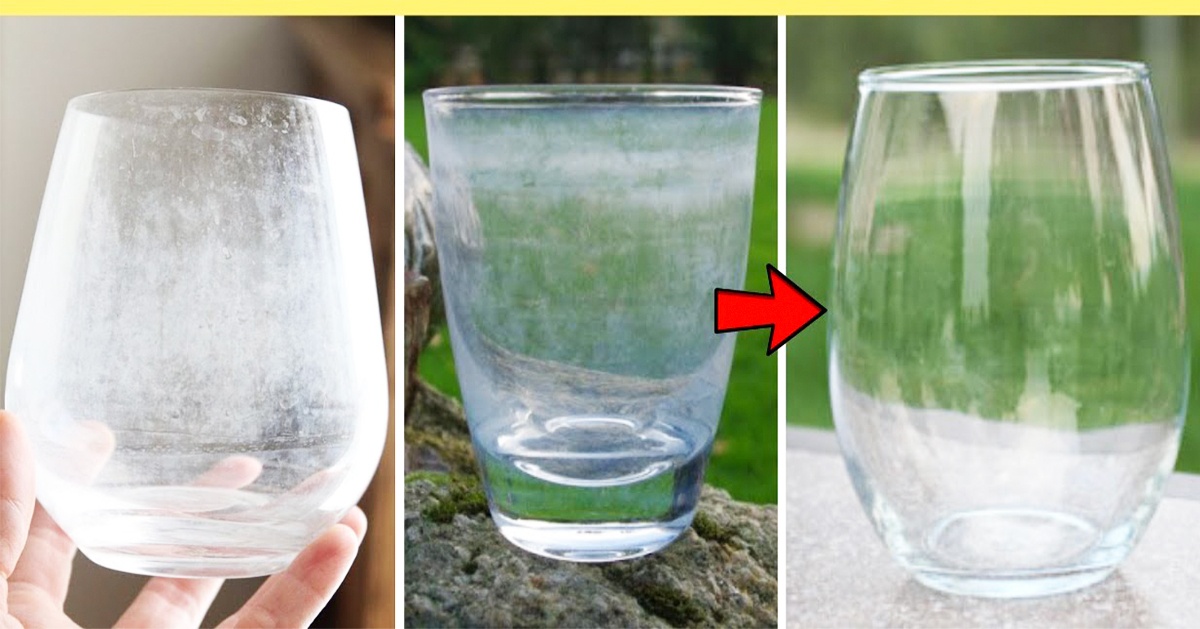
No matter how much you scrub, you just can’t get it all off, but a vinegar and water mixture will do justice to the milky residue. For every cup of water, pour in two tablespoons of vinegar. Dip a cloth into the vinegar solution and wipe down your glassware.
Dampen the cloth as many times as needed to wipe it clean. Vinegar has a strong smell. So, when you’ve cleaned the glass enough, rinse or wash it with soap to remove the smell of vinegar.
If there are more than one glasses to clean, soak them in a mixture of equal parts vinegar and warm water for 20 minutes. After, remove the glasses, rinse with cold water and let them air dry. Once done, it’s best to avoid using too much soap.
Preventing Etching on Your Glass and Ceramics
Aside from hard water causing milky or cloudy film on your glassware, high drying heat, an abrasive sponge, and clinking glasses in the dishwasher can leave etchings on your dishes. These etchings are permanent, and you cannot rinse them away, but they are preventable.
Before washing your plates, do not pre-rinse food particles off the plates. Food particles and oils are essential for neutralizing the alkaline salts in the dishwashing detergent. The alkaline salts have a harsher effect on the dishes without those food particles.
Also, use less detergent if you have soft water. You could change your detergent altogether because some detergents are naturally more abrasive. Lastly, removing your glassware before the heat drying cycle starts goes a long way in preventing damage.
How to Clean Colored or Dark Stains?
Some dishwashing liquids or detergents may not be able to remove dark and hard stains from your dishes. However, regular coffee consumers and lipstick users will find some suggested steps helpful.

Make a bleach solution by mixing a gallon of warm water with a tablespoon of chlorine bleach. Next, soak your glassware and dishes in the solution and wait for thrifty minutes. Finally, take out the glasses, rinse them in cold water, and dry them.
In cases where any stains remain, sprinkle some baking soda powder and scrub with a damp, clean sponge. Where chlorine bleach and baking soda aren’t available, try cleaning the glass with a toothbrush and toothpaste free of breath-freshening ingredients, gel, or other additives.
Use a soft-bristle brush to spread the toothpaste around and inside the glass, then rinse off with warm water. Place them in a drying tray or upside down on a dry cloth to dry.
Removing Dried Food From Your Plates
Many people don’t plan and aren’t patient with dried food on plates. As a result, they make one of the biggest glass-cleaning mistakes by scrubbing with a hard or iron sponge. Over time, cleaning with a hard sponge will inflict visible marks that never leave your dishes.
There are other things to try instead. While cooking, fill up a used pot or bowl with warm water and soak used utensils and cookware. Soaking will prevent air from drying the food on the plates while you eat and enjoy your meal.
After eating, don’t be in a rush. Instead, soak those dishes in warm water and soap, then come back some minutes later to wash the dishes. Do the same thing when using a dishwasher because you might not get clean dishes if you don’t.
Manual Hand Washing vs. Dishwasher
Handwashing involves the essential glove, sponge, and dishwashing soap. A dishwasher automatically cleans and rinses dirty dishes. You only have to load the dishwasher correctly, put in detergent, and set the wash cycle.
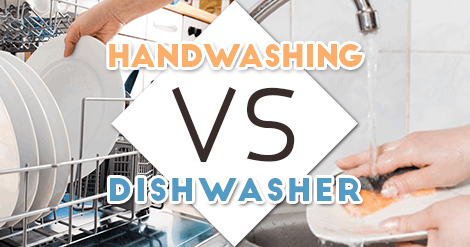
Studies by the University of California, Los Angeles, revealed that using a dishwasher saves more water than manual hand washing. The study says that a heavy load in the dishwasher would take 20 liters of water but require 170.5 liters to wash by hand and suds.
Although the dishwasher uses more energy, it does not emit as much CO2 as handwashing. The latter requires more water, transporting more water to your kitchen and then to a treatment plant. That process requires as high as 113kg more CO2 than a dishwasher.
Which is Most Preferred?
A preference for either method of cleaning your glasses and plates depends on functionality, type of stain, or how much time you can spend doing the dishes.
The dishwashing machine is more efficient in saving water and time and also cleans your dishes better. On the other hand, washing dishes with your hand uses less energy and is sometimes necessary for dealing with specific glass stains such as cloudy glasses or dish coloring.
Despite the machine’s efficiency, hand washing certainly has its place. A dishwasher won’t be able to wash non-stick pans, wooden chopping boards, and other cooking tools that aren’t machine-friendly.
Dos and Don’ts of Cleaning Glasses and Plates with a Dishwasher
As with all machines, your dishwasher needs regular maintenance. To increase the life and efficiency of your dishwashing machine, do check around the drain for pieces of food before loading up.
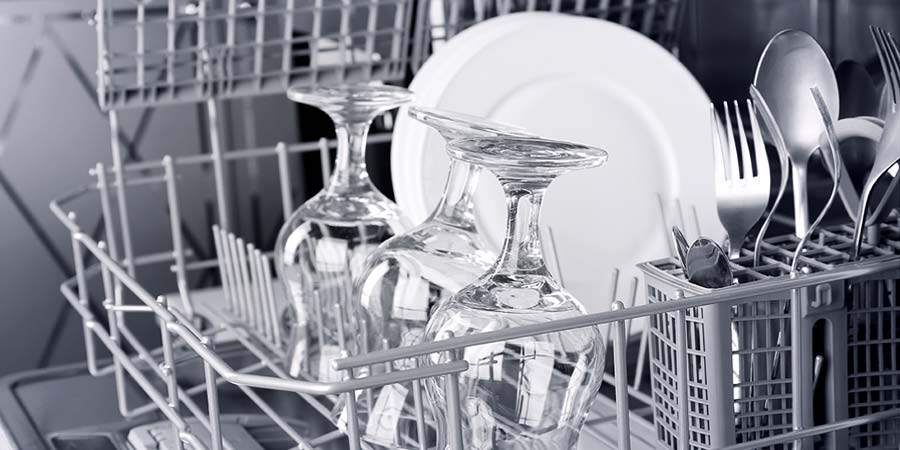
Dishwashers are designed to take on a full load, but you shouldn’t fill it up when washing glassware. Likewise, avoid multiple smaller loads because that’ll increase energy and water use.
Also, use a rinse aid to prevent water spots and film on your glasses and dishware. Rinse aids contain surfactants that reduce water’s surface tension, making it spread and roll off your dishes instead of forming droplets.
Do’s and Don’ts of Cleaning Glasses and Plates by Hand
To avoid using more water, allow the plates to pile up. Then, you’ll rinse off the sink once instead of multiple times. Also, rather than fill up the sink with washing water, use a bowl, bucket, or pot you cooked with instead.
Consider reusing the wash and rinse water to hydrate your outdoor or indoor garden. Also, your dishwashing sponge sees many germs from dirty dishes and can get messy, so change it regularly.
Lately, if dark stains on pots and pans prove stubborn, cut a lemon in two and rub the body. Leave for a while, then rinse off. You could also try tomato ketchup by layering some over the stain, leaving it to sit overnight, and washing it as usual in the morning.
Conclusion
Some people might enjoy dishwashing and find it therapeutic, while others consider it a tedious chore. Whatever your preference, make sure those dishes are clean.
With the right tools and methods, cleaning your glass cups and plates will get easier and less time-consuming. Following the techniques in this article, your dishes will maintain their clean shine and retain their beautiful colors.
